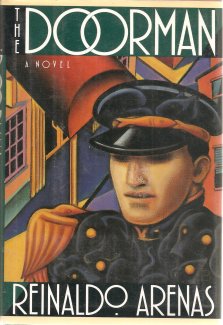Buzzfeed’s worst of 2015, Furry Chic in 2016, and Fred’s birthday. NEWSDUMP (12/18/15)
by Patch O'Furr
Headlines, links and little stories to make your tail wag. Guest posts welcome. Tips: patch.ofurr@gmail.com.
Fred Patten’s birthday was December 11 – Happy 75th, Fred!
 Read an interview with Fred about the founding of Furry fandom, by esteemed novelist Phil Geusz. Thanks Fred for bringing so much content that helps Dogpatch Press to put out Furry News every week day. Sorry that this went out too late to share Furplanet’s weekend birthday discount sale for Fred’s titles. But check them out:
Read an interview with Fred about the founding of Furry fandom, by esteemed novelist Phil Geusz. Thanks Fred for bringing so much content that helps Dogpatch Press to put out Furry News every week day. Sorry that this went out too late to share Furplanet’s weekend birthday discount sale for Fred’s titles. But check them out:
- The Ursa Major Awards Anthology
- What Happens Next (anthology)
- Five Fortunes (anthology)
- Anthropomorphic Aliens (anthology)
- The Furry Future (anthology)
- An Anthropomorphic Century (anthology)
“Accidental Guests of the Midwest Fur Fest” – outsider appreciation gets viral views.
This personal blog post got lots of love. The Healthy Not Nuts blog covers a husband and wife’s thoughts on recipes, diet, health and photography. It’s lovely when Furries add spice to the mundane! “…how can you not love these creatures that look so cute, cuddly and happy all of the time?” The post earned 267 comments. The writer shared an appreciation letter for the post, where he mentioned getting over 20,000 views.
Furries in Buzzfeed’s “The 50 Worst Things On The Internet In 2015.” (NSFW)
Use this archive link (so they get no incentive to publish unforgivable crap). Furries are in items 14, 20, 31, and 46. There’s also bonus bronies, puppy and pony players. Whether it’s love or hate, at least things are never boring…
Goodbye to Furnation.
 Furnation was one of the first visible Web presences for Furry fandom. It helped many to discover their fursonas in the 1990’s. Reddit calls it “the end of an era.” Flayrah gave it a feature under it’s tag for collected coverage. Social network Furrtrax made a generous offer of free hosting to keep it online. I tried helping, but got the feeling that Furnation’s admin was too burnt out with health problems to devote an ounce of effort for community moderation. I also assume the build of the site might be antiquated and burdensome (perhaps technical, or with copyright for content built by individuals.) It’s influence lives on in places like FurPlanet (formed from Furnation Magazine), one of the 3 main Furry publishers.
Furnation was one of the first visible Web presences for Furry fandom. It helped many to discover their fursonas in the 1990’s. Reddit calls it “the end of an era.” Flayrah gave it a feature under it’s tag for collected coverage. Social network Furrtrax made a generous offer of free hosting to keep it online. I tried helping, but got the feeling that Furnation’s admin was too burnt out with health problems to devote an ounce of effort for community moderation. I also assume the build of the site might be antiquated and burdensome (perhaps technical, or with copyright for content built by individuals.) It’s influence lives on in places like FurPlanet (formed from Furnation Magazine), one of the 3 main Furry publishers.






 The Wind in the Willows, by Kenneth Grahame. Frontispiece by Graham Robertson.
The Wind in the Willows, by Kenneth Grahame. Frontispiece by Graham Robertson. College Catastrophe, by Jan. Illustrated.
College Catastrophe, by Jan. Illustrated. The Doorman, by Reinaldo Arenas. Translated from the Spanish by Dolores M. Koch.
The Doorman, by Reinaldo Arenas. Translated from the Spanish by Dolores M. Koch.
